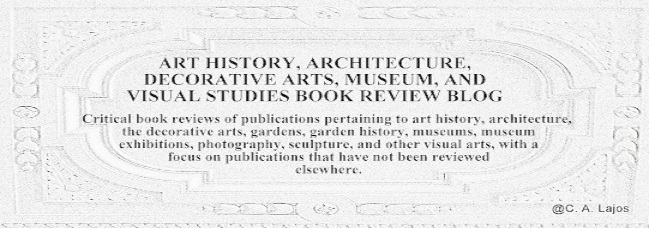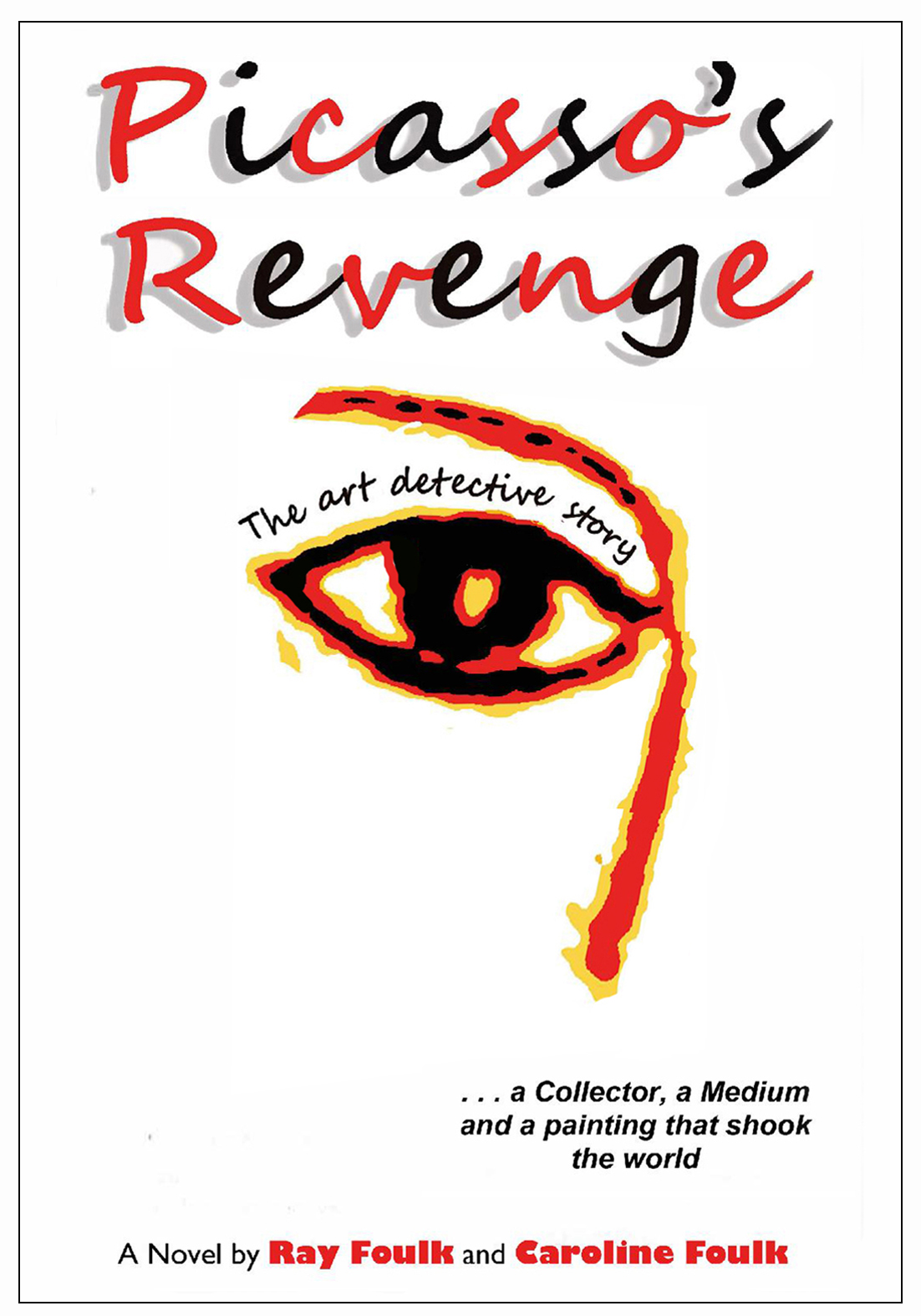Scala Arts & Heritage Publishers, Ltd.. November 2014. 64p. illus. ISBN 978-1-85759-913-8. $12.95.
In this generously-illustrated (more than 90 reproductions the majority of which are in color) publication, Berry (Assistant Director of Academic and Student Affairs, The Ringling; Ph.D, University of Oxford, UK) takes readers on a very brief introductory tour of The Ringling, a unique museum complex located in Sarasota, Florida, USA. Founded in 1911 by the circus impresario and one of the richest men in America, John Ringling (1866-1936), and his wife Mable (1875-1929) when they purchased 20 acres of waterfront land in the then small town of Sarasota, upon which they built their winter residence known as the Ca’ d’Zan (i.e. “House of John” in Venetian dialect), the Ringling grew during the 20th century into one of the largest university arts complexes in the United States. (p. 6) Today it is comprised of the Ringling mansion, the Ringling art museum showcasing the couple's art collection, a circus museum, an 18th century Italian theater, an education center, gardens, and many more attractions. It purports to offer visitors a growing list of wonders to see and enjoy including historic architecture, paintings, sculpture, decorative arts objects, circus memorabilia, and gardens. Interspersed with mostly reproductions and some accessible text, this book provides an extremely succinct overview of The Ringling and its many features. Designed as a souvenir intended to enhance visitors’ onsite experiences, it can be read in less than one hour and is recommended for museum visitors. Museum aficionados, professionals, students, scholars, and others should consult other publications, if they desire more detailed and scholarly information about The Ringling, its history, collections, and many attractions. Review copy. Availability: Amazon.com, Barnes & Noble, Scala Art Publishers, Inc.
Showing posts with label Guidebooks. Show all posts
Showing posts with label Guidebooks. Show all posts
Monday, December 15, 2014
Wednesday, March 19, 2014
Minardi, Joseph. Historic Architecture in Northwest Philadelphia, 1690-1930s.
Schiffer Publishing Ltd. 2012. c272p. bibliog. illus. index. ISBN 978-0-7643-4198-4. $50.00.
, In this very profusely-illustrated publication (744 color and black-and-white reproductions), Minardi, an award-winning photographer and the author of several books on the architecture of Philadelphia (Historic Architecture in West Philadelphia, 1789-1930s; Historic Architecture in Philadelphia: East Falls, Manayunk, and Roxborough), examines the architecture of the Wissahickon Valley and the individuals who made it possible, oftentimes with the locally-sourced building stone known as Wissahickon schist. The author presents brief histories of German Township and the neighborhoods of the Wissahickon Valley, Germantown, Mount Airy, and Chestnut Hill. Covering the colonial period to the 1930s and discussing a wide variety of styles and influences, not limited to the Georgian, Colonial, Federal, Second Empire, Romantic Eclectic, and Victorian Eclectic, Minardi provides an ambitious, wide-ranging architectural history and review of 450 structures, many of which are extant and well-preserved. He features churches, inns, museums, residences, schools, and other building types while meticulously documenting his survey with captions, endnotes, a bibliography, and biographies of selected architects and their firms. Overall Minardi’s presentation of the material is thoughtful, well-organized, nicely formatted, and professional. Unfortunately, this publication lacks a good map or maps of the neighborhoods. Scholarly yet accessible, this book will be of significant interest and value to historians, architects, preservationists, residents, and some general readers who may be delighted by its superabundance of contemporary and archival images. It is very highly recommended for large public, academic, and special libraries, particularly for those located in the Delaware Valley region. Review copy. Availability: Amazon.com, Barnes & Noble.com, Schiffer Publishing
, In this very profusely-illustrated publication (744 color and black-and-white reproductions), Minardi, an award-winning photographer and the author of several books on the architecture of Philadelphia (Historic Architecture in West Philadelphia, 1789-1930s; Historic Architecture in Philadelphia: East Falls, Manayunk, and Roxborough), examines the architecture of the Wissahickon Valley and the individuals who made it possible, oftentimes with the locally-sourced building stone known as Wissahickon schist. The author presents brief histories of German Township and the neighborhoods of the Wissahickon Valley, Germantown, Mount Airy, and Chestnut Hill. Covering the colonial period to the 1930s and discussing a wide variety of styles and influences, not limited to the Georgian, Colonial, Federal, Second Empire, Romantic Eclectic, and Victorian Eclectic, Minardi provides an ambitious, wide-ranging architectural history and review of 450 structures, many of which are extant and well-preserved. He features churches, inns, museums, residences, schools, and other building types while meticulously documenting his survey with captions, endnotes, a bibliography, and biographies of selected architects and their firms. Overall Minardi’s presentation of the material is thoughtful, well-organized, nicely formatted, and professional. Unfortunately, this publication lacks a good map or maps of the neighborhoods. Scholarly yet accessible, this book will be of significant interest and value to historians, architects, preservationists, residents, and some general readers who may be delighted by its superabundance of contemporary and archival images. It is very highly recommended for large public, academic, and special libraries, particularly for those located in the Delaware Valley region. Review copy. Availability: Amazon.com, Barnes & Noble.com, Schiffer Publishing
Sunday, September 1, 2013
Jaques, Susan. A Love for the Beautiful: Discovering America’s Hidden Art Museums.
Globe Pequot Press. 2012. c288p. illus. index. ISBN 978-0-7627-7950-5. $19.95.
In this lavishly-illustrated (more than 250 full-color photographs) guide, Jaques (Bachelor of Arts, History, Stanford University; Master of Business Administration, University of California at Los Angeles), a journalist specializing in art and travel and a gallery docent at The J. Paul Getty Museum, introduces readers to art collections in fifty lesser-known American museums. Covering museums in thirty-one states with “geography” factoring into her selection process, the author showcases “diverse” museum collections that remain “hidden” or “under-the-radar” to many museum goers, even though they may be located on the “beaten path” or in “plain sight.” (p. xii) Not known for their blockbuster exhibitions or encyclopedic holdings, these “unsung,” “largely unknown” museums constitute “collecting” museums that display “extraordinary” art from their permanent collections and “tend to be exceptional in specific areas.” (pp. xii-xiii) They typically offer “unique” art-viewing experiences that are “genuine, intimate, and uncrowded.” (p. xii) Jaques organizes her book into fifteen chapters, each of which features three or four museums that have extraordinary collections in certain areas. She titles chapters: African, Pre-Columbian & Oceanic Art; American Art; Ancient Art; Asian Art; Contemporary Art; Decorative Arts, Design & Craft; European Painting, Eighteenth to Twentieth Century; Medieval, Renaissance & Baroque Art; Modern Art; Native American & Western Art; Photography; Sculpture; Single-Artists; and Spanish & Latin American Art. In each entry for a museum, Jaques describes the museum, its founder(s), buildings, collections, and history. The author also sets forth each institution’s address, contact information, website, hours of operation, and admission fee(s) as well as briefly highlights a few of its “must see” pieces. Of interest mostly to art lovers and travelers, this accessible, artfully- designed, engaging, informative, nicely- written, thoughtful, and well-presented publication by an experienced writer, traveler, and museum aficionado may be read from cover-to-cover and/or consulted by chapter and/or entry. While Jaques’s selection criteria and classification scheme may seem too arbitrary, inexplicit, personal, subjective, and/or superimposed for some readers, this book nevertheless belongs in many public, academic, and special libraries. It is recommended for individual readers as well as for library reference collections. Review copy. Availability: Amazon, Barnes & Noble.com
In this lavishly-illustrated (more than 250 full-color photographs) guide, Jaques (Bachelor of Arts, History, Stanford University; Master of Business Administration, University of California at Los Angeles), a journalist specializing in art and travel and a gallery docent at The J. Paul Getty Museum, introduces readers to art collections in fifty lesser-known American museums. Covering museums in thirty-one states with “geography” factoring into her selection process, the author showcases “diverse” museum collections that remain “hidden” or “under-the-radar” to many museum goers, even though they may be located on the “beaten path” or in “plain sight.” (p. xii) Not known for their blockbuster exhibitions or encyclopedic holdings, these “unsung,” “largely unknown” museums constitute “collecting” museums that display “extraordinary” art from their permanent collections and “tend to be exceptional in specific areas.” (pp. xii-xiii) They typically offer “unique” art-viewing experiences that are “genuine, intimate, and uncrowded.” (p. xii) Jaques organizes her book into fifteen chapters, each of which features three or four museums that have extraordinary collections in certain areas. She titles chapters: African, Pre-Columbian & Oceanic Art; American Art; Ancient Art; Asian Art; Contemporary Art; Decorative Arts, Design & Craft; European Painting, Eighteenth to Twentieth Century; Medieval, Renaissance & Baroque Art; Modern Art; Native American & Western Art; Photography; Sculpture; Single-Artists; and Spanish & Latin American Art. In each entry for a museum, Jaques describes the museum, its founder(s), buildings, collections, and history. The author also sets forth each institution’s address, contact information, website, hours of operation, and admission fee(s) as well as briefly highlights a few of its “must see” pieces. Of interest mostly to art lovers and travelers, this accessible, artfully- designed, engaging, informative, nicely- written, thoughtful, and well-presented publication by an experienced writer, traveler, and museum aficionado may be read from cover-to-cover and/or consulted by chapter and/or entry. While Jaques’s selection criteria and classification scheme may seem too arbitrary, inexplicit, personal, subjective, and/or superimposed for some readers, this book nevertheless belongs in many public, academic, and special libraries. It is recommended for individual readers as well as for library reference collections. Review copy. Availability: Amazon, Barnes & Noble.com
Monday, November 12, 2012
Stevens, Ann and Kelly, Giles. Diplomatic Gardens of Washington.
Schiffer Publishing, Ltd.. 2012. c128p. illus. bibliog. ISBN 978-0-7643-3978-3. $34.99.
In this generously-illustrated (168 color images) publication, Stevens, a widely published photographer, and Kelly, a retired US diplomat and naval officer, take readers on an exclusive, armchair traveler’s tour of twelve embassy gardens in Washington, DC. In twelve chapters, each of which showcases a different garden, they cover the best- kept embassy gardens of Washington, which are rarely open to the public. Focusing on the Ambassadors’ gardens of Australia, Britain, Denmark, the European Union, France, the Federal Republic of Germany, the Apostolic Nunciature of the Holy See, Italy, the Republic of Korea, the Royal Netherlands, Norway, and Sweden, Stevens and Kelly provide historical facts about the properties, the Ambassadors’ residences, and chanceries. They detail the unique, cultural and diplomatic histories of the gardens, their designs, features, trees, and plants. Stevens and Kelly illustrate their text by means of color photographs, many of which are full-page and further document the features, trees, and plants of the gardens. Each chapter includes many photographs, with fourteen being the average. Visually engaging, artfully designed, thoughtfully written, and intuitively presented, based upon the organization of each garden within its embassy compound, this book may interest garden lovers, horticulturalists, students, scholars, professionals, and others. Including a one- page foreword by the Executive Director of the United States Botanic Garden, Holly H. Shimizu, a table of contents, photographic captions, and bibliography, it constitutes a sufficiently well-documented addition to the literature on gardens and garden history. As a basic resource on some of the diplomatic gardens of Washington, DC, it is highly recommended for many types of libraries, not limited to large public and special libraries. Review copy. Availability: Amazon.com, Barnes & Noble.com, Schiffer Publishing Ltd.
In this generously-illustrated (168 color images) publication, Stevens, a widely published photographer, and Kelly, a retired US diplomat and naval officer, take readers on an exclusive, armchair traveler’s tour of twelve embassy gardens in Washington, DC. In twelve chapters, each of which showcases a different garden, they cover the best- kept embassy gardens of Washington, which are rarely open to the public. Focusing on the Ambassadors’ gardens of Australia, Britain, Denmark, the European Union, France, the Federal Republic of Germany, the Apostolic Nunciature of the Holy See, Italy, the Republic of Korea, the Royal Netherlands, Norway, and Sweden, Stevens and Kelly provide historical facts about the properties, the Ambassadors’ residences, and chanceries. They detail the unique, cultural and diplomatic histories of the gardens, their designs, features, trees, and plants. Stevens and Kelly illustrate their text by means of color photographs, many of which are full-page and further document the features, trees, and plants of the gardens. Each chapter includes many photographs, with fourteen being the average. Visually engaging, artfully designed, thoughtfully written, and intuitively presented, based upon the organization of each garden within its embassy compound, this book may interest garden lovers, horticulturalists, students, scholars, professionals, and others. Including a one- page foreword by the Executive Director of the United States Botanic Garden, Holly H. Shimizu, a table of contents, photographic captions, and bibliography, it constitutes a sufficiently well-documented addition to the literature on gardens and garden history. As a basic resource on some of the diplomatic gardens of Washington, DC, it is highly recommended for many types of libraries, not limited to large public and special libraries. Review copy. Availability: Amazon.com, Barnes & Noble.com, Schiffer Publishing Ltd.
Friday, October 5, 2012
Restemeyer, Virginia and Weiner, E. I.. Hip & Hidden Philadelphia: the Unexpected House in a City of Tradition.
Probasco Haus Press. 2012. c176p. illus. bibliog. index. ISBN 978-0-9766626-2-4. $29.95.
Approaching their subject from two rubrics-- a lot can be learned about the inhabitants of a city from the buildings in which they live and the personality of a city is reflected in the architecture of inhabitants’ houses-- two longtime residents and “flaneurs” of Philadelphia, who write and edit several websites and blogs dedicated to art, architecture, landscape, and the study of placeness (hipandhidden.com , arslocii.com , hipandhidden.wordpress.com , arslocii.wordpress.com), take readers on an armchair traveler’s tour of the “other” Philadelphia, the “other” Philadelphia that can be found “inside” the Philadelphia we know from the news and its towering constructions, including condominiums, apartment buildings, and skyscrapers. Restemeyer—-an artist, designer, publisher, and writer-- and Weiner—-an author, editor, journalist, photographer, and writer-- showcase the “other” Philadelphia that may be characterized as “amazing,” “daring,” “different,” extra-“ordinary,” “hidden,” “one-of-a-kind,” “one-off,” “random,” “subtle,” “subversive,” “sudden,” “unique,” and “unusual.” (Probasco Haus Press Release) They define the “other” Philadelphia as the “hip and hidden” one that defies simple definition (pp. 5-7) yet is comprised of “unexpected” homes in a “city of tradition.” In an introduction and eleven chapters, the authors attempt to reveal houses in Philadelphia that fall outside the norms of 18th, 19th, and 20th century architectural styles and developments evidenced by the familiar brick row houses and twins that can be found throughout the city. Spotlighting nearly 100 properties, all of which are located within the city’s limits (p. 6), Restemeyer and Weiner group the residential structures into chapters according to eleven “hip and hidden” categories they developed while walking the city and researching their book: the Classics, Adaptive Reuse, Incorporated Past, Facelift, Pioneers, Quirky Individualism, House=Site, Artistic Assertion, Modernist Assertion, The Referenced Past, and Unique Comparables. As addenda, in lieu of a back-of-the-book index, they include a Neighborhood Guide, citing the pages upon which houses in particular neighborhoods are discussed, as well as an Architects and Builders List, referencing the pages upon which the works by certain architects and builders are mentioned. Whether the authors successfully fulfill one of their goals to document Philadelphia’s “essential hip and hidden” houses remains to be adjudged by readers, who must grapple with the authors’ categories as well as the plethora of stylistic concepts and terms that they use to present the “hip and hidden” houses in Philadelphia. In need of at least a glossary defining artistic styles and terms, the strength of this publication rests on its original, artful, individualistically- focused examinations of various residential structures in Philadelphia. Each house is described in considerable detail by the authors by means of insightful commentary and oftentimes by three or more color photographs illustrating its features on double-page spreads. Generously-illustrated, with more than 400 high-quality, color photographs, and professionally- presented, with careful attention to design, layout and prose, this publication will interest some general readers, students, and others. A subset of readers, most likely those with little free time to walk through the city and/or those possessing a rudimentary to intermediate knowledge of the city’s complex architectural palimpsest, may find the absence of addresses or even a map documenting the presences of structures frustrating and contrary to the authors’ intentions of encouraging readers to “explore” and “find” the houses in the “general Philadelphia neighborhoods” in which they are situated. (p. 9) Due to its original approach to its subject and its significance as a book documenting the more unusual residential structures in a large, northeastern, American city with a distinguished architectural history, this book is highly recommended for large public and special library collections, particularly for those found in the Philadelphia and Delaware Valley region. Purchased review copy. Availability: Probasco House Press and selected fine bookstores
Approaching their subject from two rubrics-- a lot can be learned about the inhabitants of a city from the buildings in which they live and the personality of a city is reflected in the architecture of inhabitants’ houses-- two longtime residents and “flaneurs” of Philadelphia, who write and edit several websites and blogs dedicated to art, architecture, landscape, and the study of placeness (hipandhidden.com , arslocii.com , hipandhidden.wordpress.com , arslocii.wordpress.com), take readers on an armchair traveler’s tour of the “other” Philadelphia, the “other” Philadelphia that can be found “inside” the Philadelphia we know from the news and its towering constructions, including condominiums, apartment buildings, and skyscrapers. Restemeyer—-an artist, designer, publisher, and writer-- and Weiner—-an author, editor, journalist, photographer, and writer-- showcase the “other” Philadelphia that may be characterized as “amazing,” “daring,” “different,” extra-“ordinary,” “hidden,” “one-of-a-kind,” “one-off,” “random,” “subtle,” “subversive,” “sudden,” “unique,” and “unusual.” (Probasco Haus Press Release) They define the “other” Philadelphia as the “hip and hidden” one that defies simple definition (pp. 5-7) yet is comprised of “unexpected” homes in a “city of tradition.” In an introduction and eleven chapters, the authors attempt to reveal houses in Philadelphia that fall outside the norms of 18th, 19th, and 20th century architectural styles and developments evidenced by the familiar brick row houses and twins that can be found throughout the city. Spotlighting nearly 100 properties, all of which are located within the city’s limits (p. 6), Restemeyer and Weiner group the residential structures into chapters according to eleven “hip and hidden” categories they developed while walking the city and researching their book: the Classics, Adaptive Reuse, Incorporated Past, Facelift, Pioneers, Quirky Individualism, House=Site, Artistic Assertion, Modernist Assertion, The Referenced Past, and Unique Comparables. As addenda, in lieu of a back-of-the-book index, they include a Neighborhood Guide, citing the pages upon which houses in particular neighborhoods are discussed, as well as an Architects and Builders List, referencing the pages upon which the works by certain architects and builders are mentioned. Whether the authors successfully fulfill one of their goals to document Philadelphia’s “essential hip and hidden” houses remains to be adjudged by readers, who must grapple with the authors’ categories as well as the plethora of stylistic concepts and terms that they use to present the “hip and hidden” houses in Philadelphia. In need of at least a glossary defining artistic styles and terms, the strength of this publication rests on its original, artful, individualistically- focused examinations of various residential structures in Philadelphia. Each house is described in considerable detail by the authors by means of insightful commentary and oftentimes by three or more color photographs illustrating its features on double-page spreads. Generously-illustrated, with more than 400 high-quality, color photographs, and professionally- presented, with careful attention to design, layout and prose, this publication will interest some general readers, students, and others. A subset of readers, most likely those with little free time to walk through the city and/or those possessing a rudimentary to intermediate knowledge of the city’s complex architectural palimpsest, may find the absence of addresses or even a map documenting the presences of structures frustrating and contrary to the authors’ intentions of encouraging readers to “explore” and “find” the houses in the “general Philadelphia neighborhoods” in which they are situated. (p. 9) Due to its original approach to its subject and its significance as a book documenting the more unusual residential structures in a large, northeastern, American city with a distinguished architectural history, this book is highly recommended for large public and special library collections, particularly for those found in the Philadelphia and Delaware Valley region. Purchased review copy. Availability: Probasco House Press and selected fine bookstores
Subscribe to:
Posts (Atom)

















